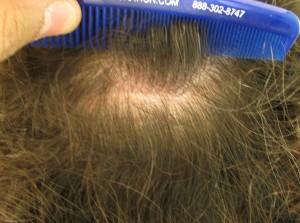Scarring on the body is a fact of life that impacts almost everyone. Sometimes the scars are caused by a simple accident while other scars are a result of abnormal wound healing. Is there an effective way to treat excessive scars that are a result of abnormal wound healing? The answer is “yes” and the solution is laser therapy according to an article in the December 2013 issue of Plastic and Reconstructive Surgery. The magazine is the official medical journal of the American Society of Plastic Surgeons.
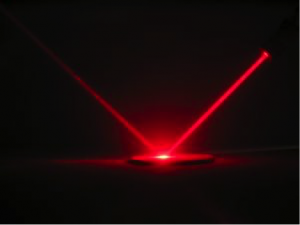 The article focuses on Dr. Qingfeng Li of Shanghai, China and her research on using laser treatment on hypertrophic scars. Dr. Li supports the use of lasers on hypertrophic scars but not necessarily on keloids. The difference in the scars is this: Hypertrophic scars are limited to the area that was initially injured while keloids have been known to spread beyond the area that was first injured. Also, keloids are more common in individuals with darker skin. What they do have in common is abnormal tissue responses that can result in areas with raised scarring that need to be addressed by cosmetic surgery.
The article focuses on Dr. Qingfeng Li of Shanghai, China and her research on using laser treatment on hypertrophic scars. Dr. Li supports the use of lasers on hypertrophic scars but not necessarily on keloids. The difference in the scars is this: Hypertrophic scars are limited to the area that was initially injured while keloids have been known to spread beyond the area that was first injured. Also, keloids are more common in individuals with darker skin. What they do have in common is abnormal tissue responses that can result in areas with raised scarring that need to be addressed by cosmetic surgery.
Dr. Li, along with her colleagues at Shanghai’s Ninth People’s Hospital, analyzed a number of studies previously conducted on laser treatment for abnormal scarring. A majority of the studies focused on treating hypertrophic scarring with laser therapy. The remaining handful of studies focused on the treatment of keloids.
The data from the patients studied showed a very good laser treatment success rate. In fact, the success rate was around 70% for both types of scarring. Two specific lasers provided the best treatment responses: The 532-nm (nanometer) laser and the 585/595-nm pulsed-dye laser. Some studies showed if a patient is undergoing multiple laser treatments, the optimum time between treatment sessions is 5-6 weeks.
It should be noted that Dr. Li and her colleagues do not claim their research is the definitive word on the subject. They call for further research of laser therapy treatments. Interested in learning more information about their research? A good article about Dr. Li’s study on laser treatment for scars can be found here.


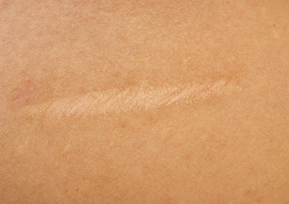 Scars start off by appearing red in color, which is when the blood vessels are inflamed and damaged. This part is known as hyper pigmented scars. Once a scar matures, the skin pigment will be lost and the color will change to white, which is known as hypo pigmented. Scars take approximately six to twelve months to completely heal and become white. The size, shape, and depth of the scar are all factors that contribute to how the scar will look after completely healing. In order to prevent darker scarring and infection, it is important to always keep the scar area clean and moist, during the healing process.
Scars start off by appearing red in color, which is when the blood vessels are inflamed and damaged. This part is known as hyper pigmented scars. Once a scar matures, the skin pigment will be lost and the color will change to white, which is known as hypo pigmented. Scars take approximately six to twelve months to completely heal and become white. The size, shape, and depth of the scar are all factors that contribute to how the scar will look after completely healing. In order to prevent darker scarring and infection, it is important to always keep the scar area clean and moist, during the healing process. 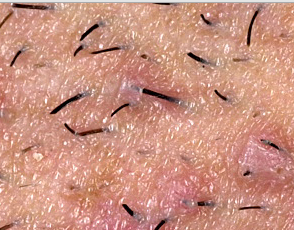 Just like what is seen with pimples, when one has an ingrown hair, it produces a small raised red bump. That bump will be itchy and many times might be sore to the touch. Treatment for ingrown hair may not be necessary at all times because ingrown hair sometimes tends to go away on its own. However, if the ingrown hair does not go away, it is best to treat it as it may leave a dark spot or scar on your skin. If an ingrown hair becomes infected, a doctor’s visit is necessary where they can safely use a needle to release the hair.
Just like what is seen with pimples, when one has an ingrown hair, it produces a small raised red bump. That bump will be itchy and many times might be sore to the touch. Treatment for ingrown hair may not be necessary at all times because ingrown hair sometimes tends to go away on its own. However, if the ingrown hair does not go away, it is best to treat it as it may leave a dark spot or scar on your skin. If an ingrown hair becomes infected, a doctor’s visit is necessary where they can safely use a needle to release the hair. 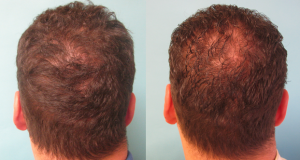

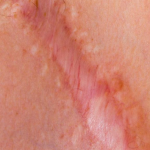 Scarring is the result of tissue fibers replacing normal skin after a trauma. Scarring can result from surgery, burns, open wounds, or any other abrasion of the skin. Scars are caused when the deep thick layer of skin, also known as the dermis, is damaged. Once trauma occurs, the body forms a collagen fiber which aids in the healing process of the wound and causes a scar. Because the tissue is a different consistency and quality the scar becomes visible.
Scarring is the result of tissue fibers replacing normal skin after a trauma. Scarring can result from surgery, burns, open wounds, or any other abrasion of the skin. Scars are caused when the deep thick layer of skin, also known as the dermis, is damaged. Once trauma occurs, the body forms a collagen fiber which aids in the healing process of the wound and causes a scar. Because the tissue is a different consistency and quality the scar becomes visible.